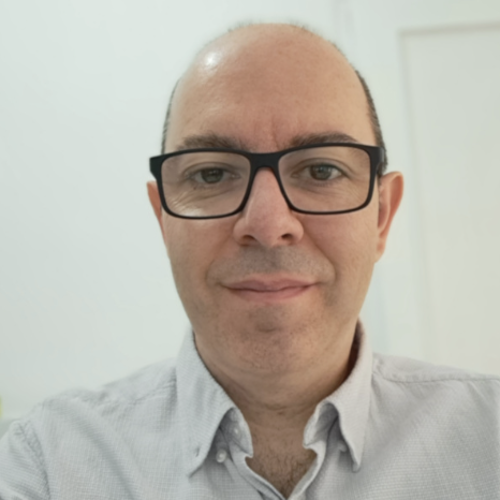
FRANCISCO MIGUEL
MONTENEGRO MONTES
María Zambrano
Department: Física de la Tierra y Astrofísica
Faculty: Ciencias Físicas
Research group: Grupo UCM de astrofísica instrumental y extragaláctica
Email: fmontene@ucm.es
Personal web: https://fmontene.denebola.org/
Doctor by the Universidad de La Laguna with the thesis Cuásares emisores en radio con líneas de absorción anchas 2009. Supervised by Dr. Ismael Pérez Fournón, Dr. Karl-Heinz Mack, Dr. José Ignacio González Serrano.
I currently hold a María Zambrano contract for talent attraction at the Complutense University of Madrid (UCM), which I was awarded in 2021. I am part of UCM group of Extragalactic Astrophysics and Astronomical Instrumentation (GUAIX) where I participate in various research lines, mostly related to instrumentation. Firstly, I am contributing to the design and operations plan definition of the TARSIS instrument, and I am leading the studies for the optimization of the observing strategies and target scheduling with a novel IA-based technique. At UCM, I am lecturer in the Astrophysics Master's Degree program and have supervised students in their master's theses. I am also volunteer mentor of high school students interested in STEM disciplines. Finally, I belong to the Institute of Particle and Cosmos Physics (IPARCOS), where I serve as a member of the Scientific Strategy Committee. Previously, I worked for 7 years at the European Southern Observatory (ESO) as Head of the Science Operations team of the APEX Observatory in Chile. I was responsible for the performance of the observatory and for leading the activities of the Sciops team. In 2017 we transitioned into a 24-h remote operations scheme, and I played an important role in its design and implementation. I also served as a panel member for the APEX Time Allocation Committee for the Chilean queue and was an invited expert reviewer for the National Science Foundation. Since 2021, I have been contributing to the EU-funded studies to design the future 50-m sub-mm telescope, AtLAST, focusing on the development of the Science operations plan and contributing to define its scientific goals. We will continue the work developed so far and are applying for additional EU funding. For this, I have created a new UCM node that has been invited to become a full member in the consortium. Before, I worked for 6 years as APEX Operations Astronomer, participating in scientific and technical observations and in the commissioning of instruments. I spent 20% of my time doing research. Examples are my participation in the planning and execution of the SEDIGISM survey. This work resulted in several publications that have enabled the census and extraction of physical parameters of molecular clouds. I have also participated in the technical setup and the APEX-based observations for the Event Horizon Telescope. These led to the first direct detections of supermassive black holes, an important milestone in astronomy. In my thesis, I studied the population of radio quasars with broad absorption lines (BAL QSOs), addressing the question of their origin. This was a novel research line by that time and the systematic methodology that I established was later adopted in subsequent studies focusing on larger samples. Previously, I participated in the characterization of the infrared sources of the main extra-galactic fields (SWIRE) observed with Spitzer and Herschel space observatories. Throughout my professional career, I have combined scientific production with the development of technical and management skills. I am author or co-author of 28 publications in Q1 astronomy and astrophysics (h-index 15) and have served on various evaluation committees. I have experience in project and personnel management and have developed a keen interest in the application of machine learning and AI techniques in operations and research.










